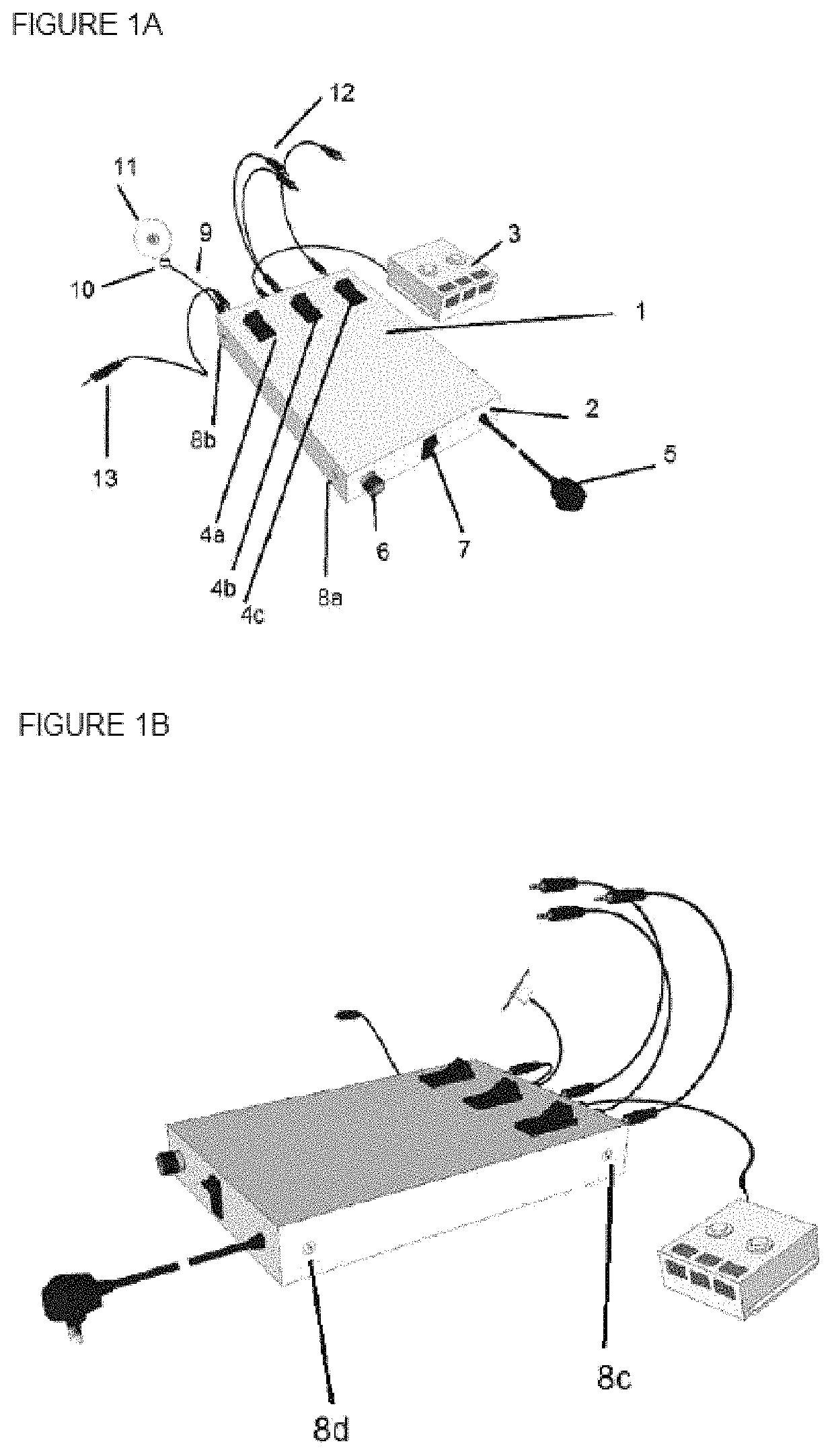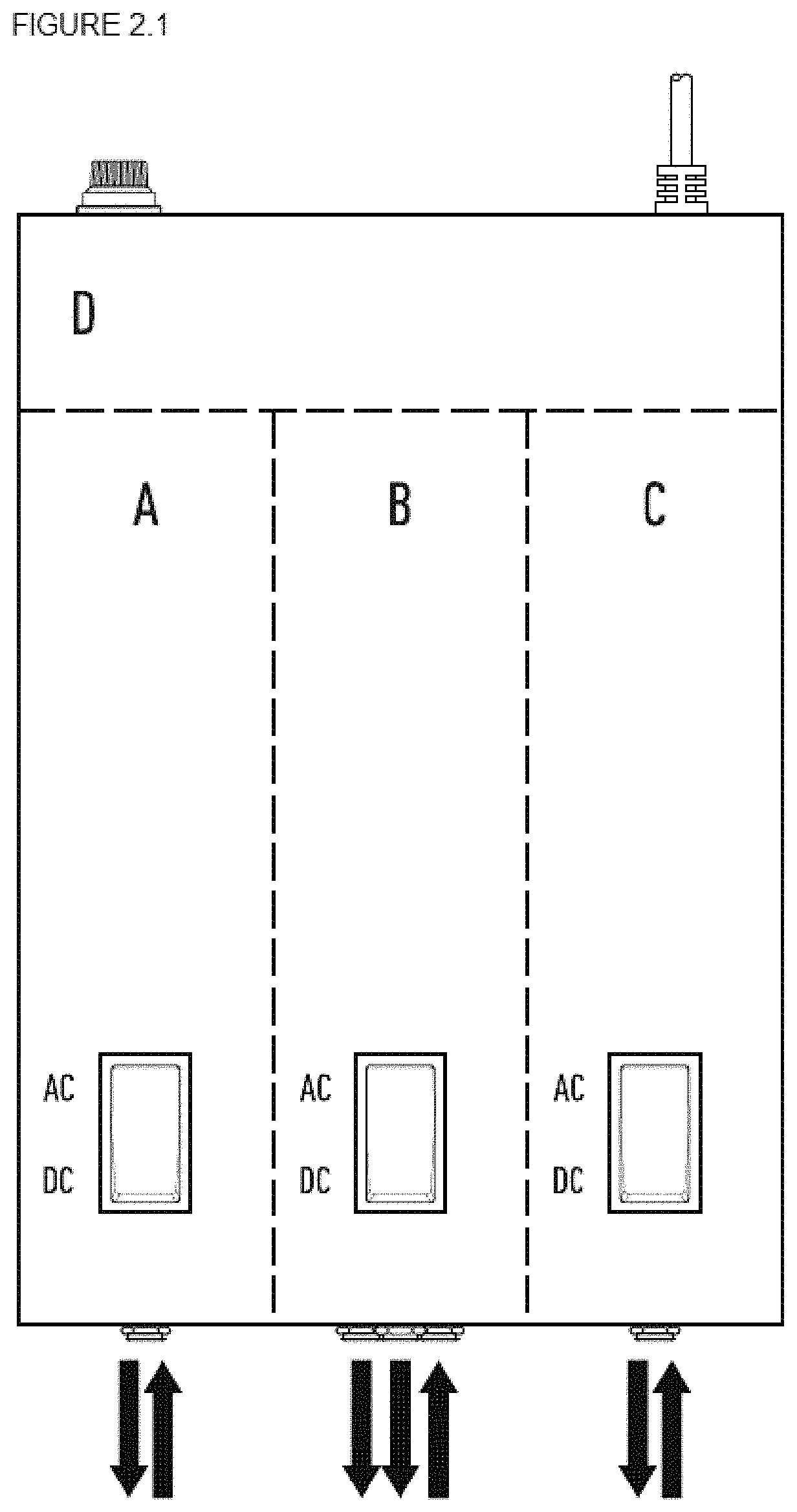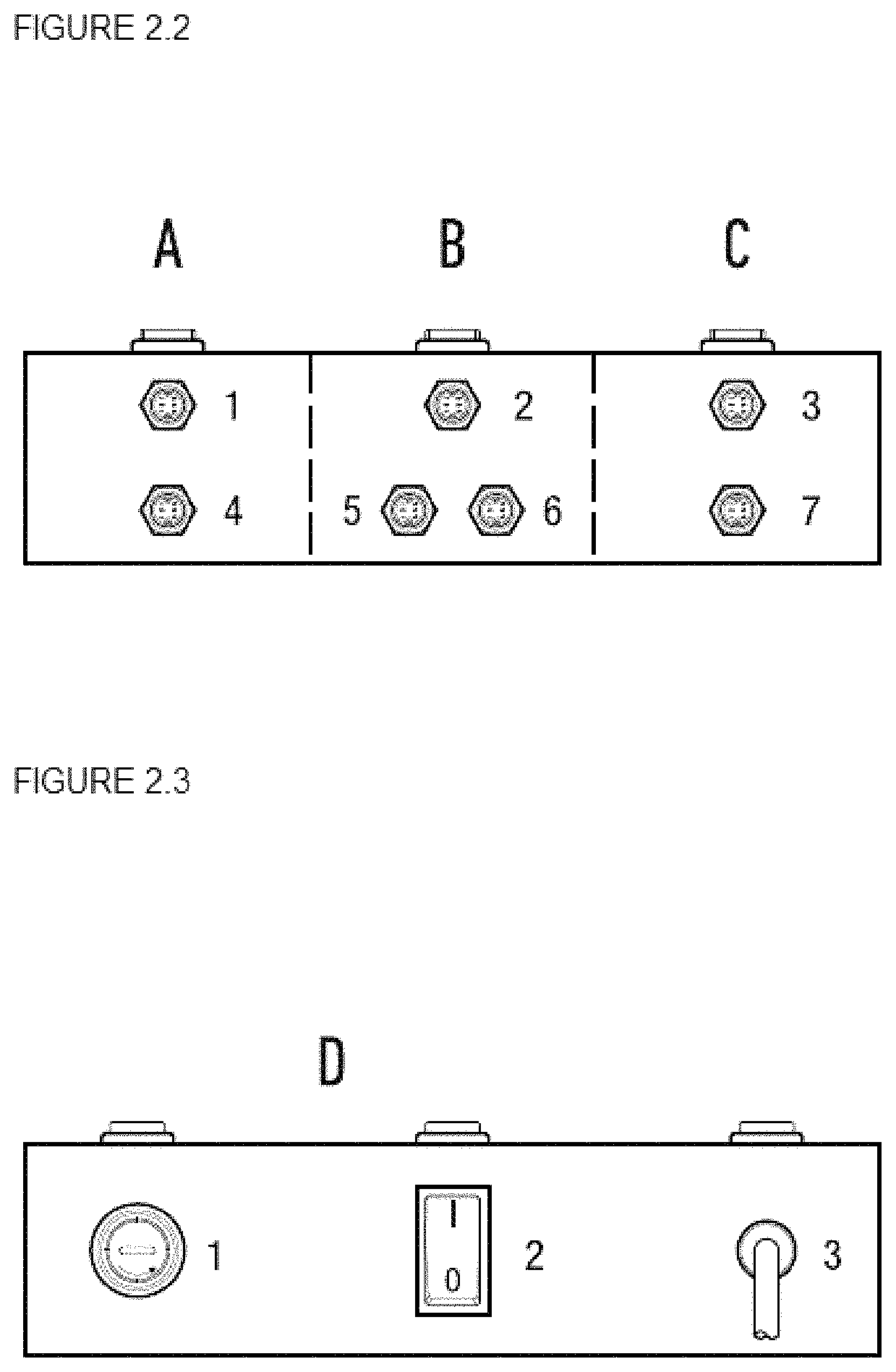Modular device and method for analog electroencephalography synchronization with oscillating electrical light-related events, and motor behaviors
a technology of analog electroencephalography and light-related events, which is applied in the field of modular devices and methods for analog electroencephalography synchronization with oscillating electrical light-related events, and motor behaviors, can solve the problems of affecting the customization of tests, equipment is of little use for research purposes, and equipment items are extremely expensive, so as to achieve convenient and low-cost functional technology, the effect of easy offs
- Summary
- Abstract
- Description
- Claims
- Application Information
AI Technical Summary
Benefits of technology
Problems solved by technology
Method used
Image
Examples
Embodiment Construction
[0026]The basic elements of the device addressed by the invention are presented below.
[0027]The device constituting the invention is a modular item of equipment, with three types of function modules: a motor response processing module (A, as shown in FIG. 2.1); electrical oscillation processing module (B, as shown in FIG. 2.1); and the light processing module (C, as shown in FIG. 2.1). Module D is the power feed and control module, containing the power switches, the power input and the voltage safety control (fuse), that distributes electricity to all three (or more) function modules.
[0028]A unit of the device constituting the invention may contain as many function modules as wished, in a customized manner. For example, two modules B, one module A and two modules C. As modules A and B have two input channels each, generating trigger waves at the outlet in a single channel, with different amplitude levels, which can indicate whether there was a response or the presence of a stimulus ...
PUM
 Login to View More
Login to View More Abstract
Description
Claims
Application Information
 Login to View More
Login to View More - R&D
- Intellectual Property
- Life Sciences
- Materials
- Tech Scout
- Unparalleled Data Quality
- Higher Quality Content
- 60% Fewer Hallucinations
Browse by: Latest US Patents, China's latest patents, Technical Efficacy Thesaurus, Application Domain, Technology Topic, Popular Technical Reports.
© 2025 PatSnap. All rights reserved.Legal|Privacy policy|Modern Slavery Act Transparency Statement|Sitemap|About US| Contact US: help@patsnap.com



